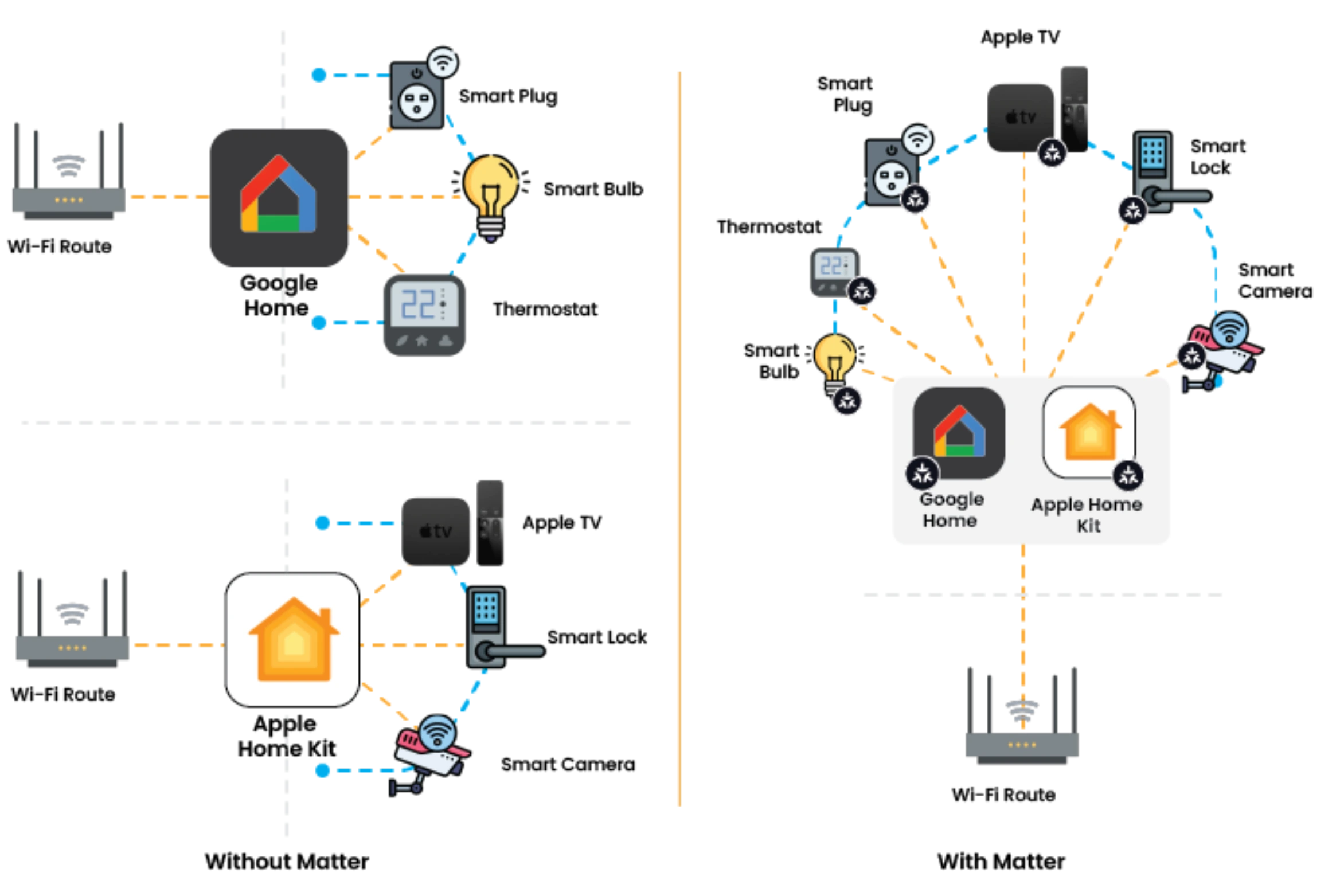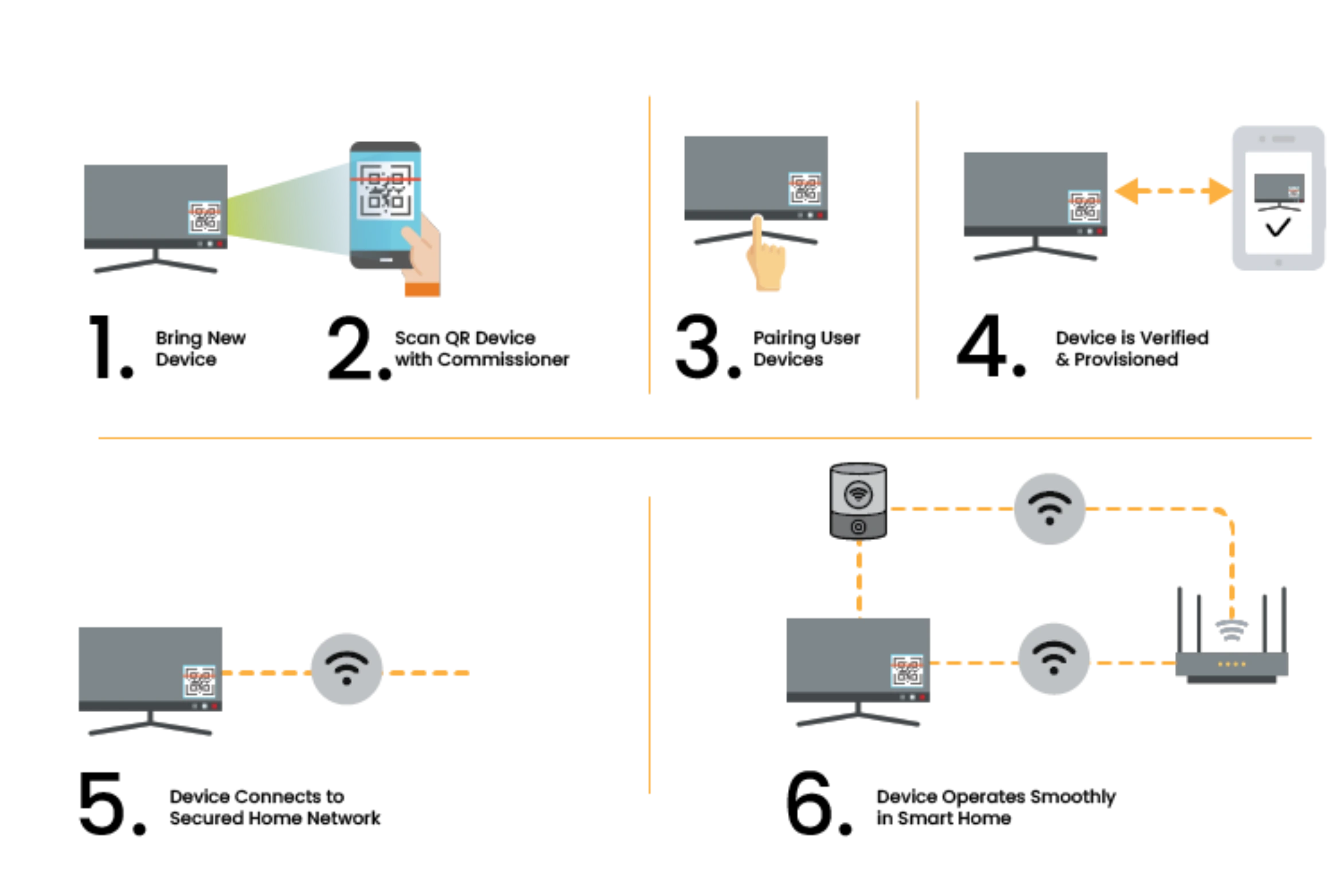

ACL Digital
Matter – The Next Big Thing In The Home Automation Industry
The Internet of Things (IoT) has opened avenues in the home automation industry. Always-on connected devices change the way we interact, complete tasks and live. However, these connected smart devices need interoperability to communicate with different devices. In addition, IoT devices dependent on the cloud can stop functioning if the internet connection is lost. To overcome this issue, Matter protocol helps. Matter protocol enables IoT devices to work offline without requiring access to the cloud, and that also increases the level of security for devices. This is another crucial factor for Matter to be a game changer in the smart home industry.
The Smart Home Industry is very confusing from the consumer point of view. The consumers often face the dilemma while choosing a protocol as there are different protocols, standards in the smart home space for smart home solution development. For example if we buy a smart light for our existing smart home then we have to check the compatibility with the installed ecosystem. To make all the smart home devices work together, the new standard – Matter helps.
What is the Matter Smart Home Protocol?
Matter uses a wireless technology based on Internet Protocol that lets devices work across all major Smart Home platforms like Apple, Google, Amazon Alexa and many more. The Matter protocol provides the Smart Home devices a universal language, enabling them to share the information across ecosystems. Currently, Matter is managed by Connectivity Standards Alliance, formerly the Zigbee Alliance.
As the Smart Home market evolves, the cyberattacks threats increase significantly. Some of the threats like malfunction via remote control, data and privacy breaches, DDoS (Distributed Denial of Service) attacks which may cause major complications. To overcome these, matter protocol provides device authenticity with secure communication.
Why is Matter Protocol Important?
The rising trend of the smart home ecosystem into home and workplaces also increases the purchase of smart home devices from several brands. For example, you might consider Amazon Alexa and Google Assistant over other home security brands because of the difference in features. However, an issue over here arises. Will users be able to use smart home devices from different brands efficiently?
The new connectivity standard, Matter, can simplify the smart home ecosystem. Matter contains a multi-admin control feature allowing consumers to use multiple platforms simultaneously. As long as the devices in use are Matter-enabled, they can be connected to various platforms irrespective of the brand. For example, if you’re using a Nest Thermostat and you wish to control it using Apple Home Kit or Google Home or even both at the same time, Matter can make that happen. However, since Matter is a connectivity protocol, you’ll need to have all the devices to be Matter certified in the existing smart home ecosystem.
Which Protocols are Supported with the Matter Protocol?
Matter supports Wifi, Ethernet and Thread (802.15.4) protocol. For thread devices, a border router is required to connect IP based networks.
Matter uses the ZCL (Zigbee Cluster Library) as a data model which defines the end node capability and its role through different types of clusters and its attributes.
Matter Commissioning and End Node Controlling Process
Once the Matter protocol is officially released and the user purchases matter accessories such as smart bulb, door lock, presence detection sensor, glass break sensor, etc. from the market and installs it in an existing Smart Home Ecosystem then it requires a process called commissioning. Commissioning is a process to join the Matter network securely.
Commissioning process is initiated by a Matter Controller like Apple home kit app, Android CHIP app or Unix/Linux based CHIP app. The user can start the commissioning process by scanning the QR code or by pressing the pairing button of the matter accessory.
Bluetooth Low Energy, Thread and Wi-Fi are currently the protocols used by Matter Controller during the commissioning process. Bluetooth Low Energy is used for device discovery, pairing and network credential transfer.
The device then switches to either Wi-Fi or Thread as a communication protocol and authentication process resumes to incorporate the device into the Matter network. Once the commissioning process is completed, the device is now Matter enabled and can be controlled using a Matter controller.
Non Matter networks like BLE Mesh, Zigbee, Z Wave can connect with Matter network via bridge platform.
For Matter cloud connectivity is optional. Users can control the accessory locally via mobile application, voice assistant or smart TV.
Advantages of Matter protocol
- Interoperability: Matter enabled accessories will work on all the ecosystems. So a Google Nest doorbell should hypothetically be able to work as seamlessly with an Amazon Echo
- Open-source under the Apache License: Matter is open source so code is available at free of cost. So it provides full freedom to developers to develop their own application under Apache license
- Security and Reliability: Matter uses best cryptographic standards for network communications to ensure that unauthorized entities cannot easily access or tamper with data communicated between Matter devices
In Matter 1.0, major focus is on Smart Home applications. In future, this technology will be used in other areas like IIOT (Industrial internet of things), Medical and automotive application.
Related Insights




